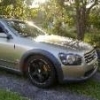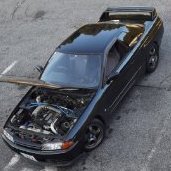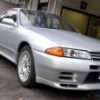China Intake Pipe Kit For Your Gtr - A Review.
Announcements
-
Similar Content
-
Latest Posts
-
By joshuaho96 · Posted
Yeah I've personally seen the RB26 pull 30 degrees of ignition timing out of the base timing map if the ECU detects a cold start, it nearly starts misfiring because of it around 2000 rpm and it feels like the engine has no power. I'm just surprised that modern OEM control strategies are actually trading off efficiency for in-cylinder emissions. I would expect something like aggressive EGR dilution + tumble generation valve use to improve EGR tolerance to reduce in-cylinder NOx + HC from crevice volume while also reducing throttling loss vs pulling out some timing if not knock-limited. -
*** DATE CHANGE *** Date has been changed to Saturday 17th May. The time and location is still the same!
-
You're more than welcome to - looking forward to meeting you!! The turnout depends on the event and location... Pizza Runs on a clear night can drag out a decent crowd!
-
Updating results following our SR20det project. Data collected form improves future turbocharger making and high flowing services. So far differences between G and GT series turbine wheels, we are in the process of making a new turbine, the aim is for better mid top range flow without gain too much lag. Result is back to back comparison of G25-660 and GTX2867 spec turbochargers on the same car, nothing changed apart from turbocharger. Both tuned to knock limit from pump 98 fuel (US Ron93). GTX2867 was about 400RPM more responsive making 255rwkws while G25-660 made 17 extra Kws with wider spread of torque after 4500RPM finishing off at 272rwkws.
-
@GTSBoy i tried to jumper the wires and got the steering wheel light to come on which is right under the gear indication but that still doesnt come on. Can it be an issue with my cluster?
-








Recommended Posts
Create an account or sign in to comment
You need to be a member in order to leave a comment
Create an account
Sign up for a new account in our community. It's easy!
Register a new accountSign in
Already have an account? Sign in here.
Sign In Now